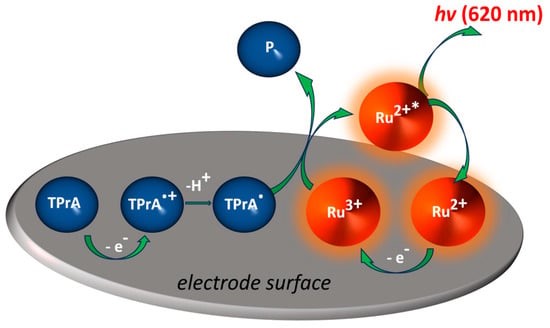M. Sentic, I. Trajkovic, D. Manojlovic, D. Stankovic, M. Vesna Nikolic, N. Sojic and J. Vidic
The modern lifestyle has increased our utilization of pollutants such as heavy metals, aromatic compounds, and contaminants that are of rising concern, involving pharmaceutical and personal products and other materials that may have an important environmental impact. In particular, the ultimate results of the intense use of highly stable materials, such as heavy metals and chemical restudies, are that they turn into waste materials, which, when discharged, accumulate in environmental water bodies. In this context, the present review presents the application of metal–organic frameworks (MOFs) in electrochemiluminescent (ECL) sensing for water pollutant detection. MOF composites applied as innovative luminophore or luminophore carriers, materials for electrode modification, and the enhancement of co-reaction in ECL sensors have enabled the sensitive monitoring of some of the most common contaminants of emerging concern such as heavy metals, volatile organic compounds, pharmaceuticals, industrial chemicals, and cyanotoxins. Moreover, we provide future trends and prospects associated with ECL MOF composites for environmental sensing.







